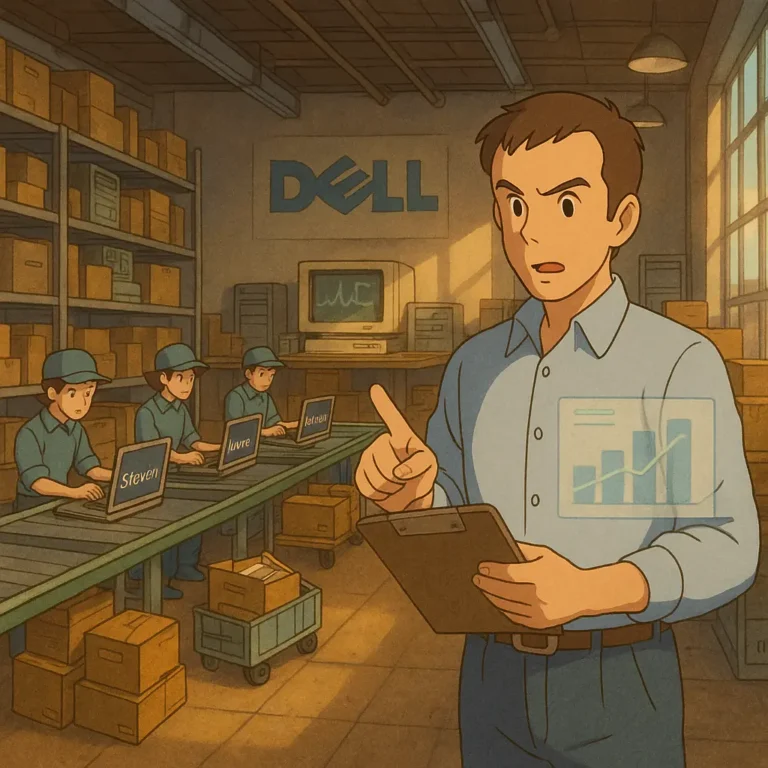
Every successful business, as does its supply chain, has at least one strategy that governs its growth and development.
There is no one-size-fits-all approach to creating the perfect supply chain strategy.
A supply chain without a strategy is just a bunch of activities without any purpose and will not last long in today’s market.
Many factors come into play, such as expertise, capital, location, industry, and customer behaviour.
However, there are tips every supply chain should consider when setting up the right strategies, which we will review in this article.
What is a Supply Chain Strategy?
A supply chain strategy is a detailed outline showing how a supply chain wishes to manage the flow of goods, services, information, and other resources from the point of origin to consumption.
Ideally, it will show the decision-making process and procedures that govern its sourcing, vendor management, production, and distribution processes.
A strategy is a roadmap on how the supply chain intends to grow and support the business expansion efforts.
It helps clarify the goal of the supply chain and identify necessary steps and processes that need to be in place to achieve these goals.
Key Components of a Supply Chain Strategy
When creating a supply chain strategy, there are three necessary pillars you will need to tick off or consider.
1. Collect and Analyze Data
A supply chain strategy is not a policy. It is a set of do’s and don’ts that will get your supply chain from point A to point B.
This means when creating a supply chain strategy; it is necessary to collect as much data as possible from your current supply chain, analyze them and see where you can make improvements.
Compare the current supply chain to where you want it to be, and then identify and analyze strategies you believe won’t get your supply chain to that point.
2. Planning
This is the planning phase of the supply chain. After collecting data and identifying potential areas of change, the next step is to create a plan to get your supply chain where it needs to be.
The plan can involve several approaches to the overall supply chain or different aspects of the supply chain.
Creating a supply chain plan can be complicated, especially for the larger ones.
Always ensure to consider all the critical variables otherwise, the supply chain will be at the risk of failing.
3. Execution
At this point, you have an executable strategy. Implement it gradually and monitor the process to ensure every part of the supply chain is working in sync with the other and that the objectives are being reflected.
Types of Supply Chain Strategy
Depending on several conditions or factors, supply chain strategies differ from each other. However, there are three common supply chain strategies favoured by most businesses.
1. Demand-driven Supply Chain Strategy
This type of strategy focuses on integrating customer demands throughout the supply chain to create a more efficient and customer-centric system.
With the aid of technology, it gathers and analyzes data to understand the custom better then it modifies the product and inventory to fit the customer.
This approach can assist businesses in meeting consumer demand by allowing them to estimate future demand and allocate the necessary manpower to satisfy that demand.
On the other hand, implementing demand-led supply chain strategies can take time, and it can be challenging to get the numbers right.
2. Agile Supply Chain Strategy
This strategy emphasizes adaptability and responsiveness to alterations in demand or market circumstances.
By making quick decisions, altering production, and swiftly shifting items to new locations, the supply chain can quickly react to changing situations.
Agile supply chains are effective for manufacturing products with limited shelf life or that undergo frequent change.
In some circumstances, they enable businesses to offer a wider variety of products while also enabling significantly quicker client delivery.
Zara uses this kind of supply chain strategy.
3. Collaborative Supply Chain Strategy
This strategy entails working together with suppliers, clients, and other supply chain partners to boost productivity, cut costs, and boost customer satisfaction.
The key component of this supply chain strategy is the sharing of rseoruces, whether it is information, expertise, or resources.
Businesses can share expenses and risks thanks to collaborative supply chain initiatives.
However, this will only occur if there is open communication and consensus regarding the aims and priorities of any collaboration.
Tips to Create the Perfect Supply Chain Strategy
As I mentioned, the perfect template does not exist. However, there are tips that can guide you in creating the right strategy for your supply chain.
1. Customer First Approach
The customers are the entire point of your supply chain and business. It makes sense to make them center stage when creating a supply chain strategy.
Having a customer-first approach helps slim down the supply chain and allows the system to focus on only what will make the customer happy.
The average customer demands include shorter order cycle time, lower costs, and fewer errors in deliveries.
When considering the customer, consider their behaviours as well as the conditions they cannot control.
For example, as much as the customer enjoys a good umbrella, it will be difficult to buy one during summer.
2. Cut Costs
As much as your supply chain focuses on the customer, it should be able to manage its resources while at it.
Lower cost is a big demand from the competition, and on average, 10% of total operational cost is spent on the supply chain.
As businesses try to cut costs, they would ordinarily look to the supply chain and its network of operations.
To cut costs, work to optimize and slim down the supply chain, automate it, and review supplier contracts.
For more tips on cutting down costs, you can check out our article on cost reduction strategies.
3. Sustainability
Sustainability is here to stay and costs a lot of initial capital. It has an amazing return on interest, though.
Sustainability allows the supply chain to shift towards social and environmental consciousness while optimizing it for the future.
Your customers are interested in it. It is a huge marketing opportunity for businesses, and governments across the globe are setting up policies for sustainability.
It’s a buy now or pay more later type of situation, and for supply chains looking to the future, sustainability is a must-have.
4. Supplier Relationship
Supplier relationship is a very important question that a lot of supply chains should consider.
Do you want to deal directly with other suppliers, and if you do, how many and in what departments do you want them?
The norm today is to engage multiple suppliers for different levels of the supply chain. However, that doesn’t always have to be the case.
Andrew Carnegie and Elon Musk’s Tesla have shown that vertical integration can work. However, we just need the right motivation and environment.
You can read all about supplier relationship management here.
5. Communication
Without adequate communication, your supply chain strategy will suffer. The lack of communication can single-handedly sabotage your supply chain, especially in a globally interconnected world.
Communication ensures visibility, flexibility, and resilience throughout the supply chain. With communication, you can mitigate risk and avoid potential disruptions.
In any strategy you choose, you must ensure adequate communication and mediums are available to foster these communications.
A good method of ensuring communication all through the supply chain is by going digital. Which brings us to the next point.
6. Embrace technology
Technology is the bedrock of the modern business world and, by extension, the modern supply chain world.
With tech solutions like AI, blockchain, and ERP systems, you can boost your supply chain productivity and reduce the time and money it takes for the supply chain to process goods and services.
As much as possible, embrace as much technology as you can in every facet of your supply chain. It will only help you implement your strategy more effectively.
Importance of Supply Chain Strategy
Cost-effectiveness
An effective supply chain strategy can save operational expenses significantly. It aids in process improvement, waste reduction, and discovering affordable sourcing and transportation options.
Client satisfaction
Keeping a devoted client base requires promptly and effectively responding to customer expectations.
A carefully thought-out supply chain makes sure that goods are accessible when and when customers need them, which boosts customer happiness and retention.
Competitive Advantage
An effective source of competitive advantage is a strategic supply chain.
It enables a business to stand apart from rivals by providing quicker delivery, greater quality, or more adaptable service.
Global Reach
A supply chain strategy can assist companies with global operations in negotiating the complexity of international trade, customs laws, and exchange rate fluctuations.
It makes sure that things can move across borders effectively.
Adaptability
Markets and consumer preferences shift, requiring flexibility.
A corporation may respond to changing circumstances and embrace new possibilities while preserving efficiency and quality with flexible supply chain strategies.
FAQs on Supply Chain Strategy
Q1: How can a business synchronize its supply chain strategy with its corporate goals?
Setting supply chain strategies that support overarching company objectives is necessary for coordinating the supply chain and business. It necessitates a thorough comprehension of market dynamics and client needs.
Q2. How does supply chain strategy handle issues with the world’s supply chains?
Global supply chain strategies must consider factors like geopolitical concerns, currency fluctuations, cultural differences, and international trade laws. It emphasizes facilitating effective cross-border trade in goods.
Q3: How can a business ensure its supply chain strategy is still flexible?
A flexible strategy incorporates a continuous improvement culture and plans for any disruptions. Performance measurements and regular evaluations assist in pinpointing areas that need improvement.
Conclusion
In the world of business, a well-crafted supply chain strategy is the compass that guides an organization toward efficiency, cost-effectiveness, and customer satisfaction.
There is no one-size-fits-all approach to creating perfect supply chain strategies, but the key components and tips mentioned in this article should be enough to guide you in creating the right one.

Obinabo Tochukwu Tabansi is a supply chain digital writer & ghostwriter helping professionals and business owners across Africa explore various strategies that work and learn from the success and failures of various supply chains across the globe. He also ghostwrites social content for logistics & supply chain businesses








